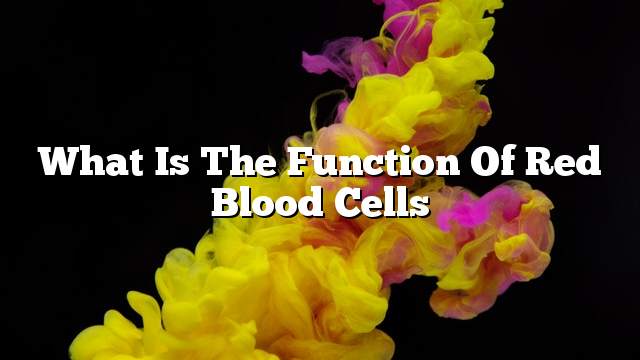Red blood cells
Human blood consists of cells and plasma, with plasma forming 55% of the blood volume, a yellow liquid. The rest are occupied by different types of blood cells, such as red blood cells, white cells, and platelets. Red blood cells represent 99% of the body’s solid blood components. Its shape resembles the disk, and is concave on both sides, with protrusions at the top and bottom of the cell. Unlike many body cells, red blood cells do not contain a nucleus, but contain a hemoglobin molecule that is of great importance to the body. It transfers the oxygen needed to build and destroy the lungs to various cells of the body, as well as the transfer of carbon dioxide from Cells into the lungs.
These cells have the flexibility to bend easily so that they can pass through the fine capillaries. All blood cells originate from stem cells common to each other. These stem cells are produced mainly in the bone marrow and later undergo several stages of development, ending with the formation of red or white blood cells or mature blood cells.
The production of blood cells is controlled by the release of certain types of chemical compounds; production is controlled Red blood cells Via the hormone erythropoietin which in turn produces kidneys. The adult male body contains about 5 million red blood cells / ml of blood, while the adult female has a relatively smaller amount of up to 4.5 million cells / ml of blood. The numbers of red blood cells vary according to the geographical location of the human being, for example, in people living in areas very high above sea level. The life cycle of the red blood cell extends to approximately 120 days. When you grow old, or if they are damaged, they are destroyed in the bone marrow, liver or spleen.
Red blood cell function
The red blood cells are one of the most important cells in the body. They perform many functions. Their primary function is to transport oxygen. The red blood cells of the capillaries in the lungs start to take oxygen from the air and transfer it through the bloodstream to all cells of the body. Cells need to be built and demolished. This process results in several waste, including carbon dioxide, and the red blood cells also transport it to the lungs, through the secretion of the carbonic anhydrase. Red blood cells also supply the body’s various cells with food and essential compounds, and transport their waste to the liver. It also regulates the level of acidity of the blood, or so-called pH; it acts as a regulator of acid balance in the base of blood.
Diseases that may affect red blood cells
There are many disorders that can be caused to red blood cells, including the result of cases of illness, or lack of vitamins, vitamin B12, folic acid, iron, and what is the result of genetic diseases. One of the most prominent diseases of red blood cells is the so-called anemia where the numbers of these cells are few, which leads to disruption in the supply of oxygen cells in the body. The disease may also affect the shape and size of red blood cells, depending on the type of anemia; it may be either normal or abnormal, and may be larger or smaller than normal size.
Anemia patient may suffer from many symptoms, such as feeling tired and tired, severe skin pigmentation, irregular heartbeat or heart muscle failure in severe cases. In children, it may cause growth disorder compared with healthy children. The most common types of anemia are as follows:
- Iron deficiency anemia : Iron is necessary for the manufacture of red blood cells, and is the most common types of anemia. It may be caused by several reasons, some of which are linked to iron deficiency in food, such as sudden bleeding, chronic bleeding, or iron imbalance in the body.
- Sickle cell anemia : A genetic disease that breaks down the form of red blood cells becomes like the sickle or half moon, which loses its flexibility, and makes it more viscous, difficult passage through the blood vessels, thereby blocking the bloodstream. This complication can result in many complications, such as severe or chronic pain, increased tissue exposure, and death of infected organs or tissues. Sickle cells die in a much shorter period of healthy cells; ie, within about 10-20 days.
- Anemia caused by chronic diseases : Kidney disease, cancerous tumors, rheumatoid arthritis and others. Although they are small in numbers, their shape and size are normal.
- Hemolytic anemia : This type is caused by the destruction of red blood cells due to abnormal process before the completion of the age of default. Red blood cells are reduced, and bone marrow can not compensate for this deficiency.
- Other cases cause an increase in the number of red blood cells, such as steroid steroids, carbon monoxide poisoning, congenital heart disease, as well as the use of erythropoietin injections by athletes to improve their performance, drought, and some disease. These causes increase the secretion of kidneys to the hormone erythropoietin, thus increasing the production of bone marrow for red blood cells, but the carrying capacity of oxygen in the red blood cells less in these cases.
